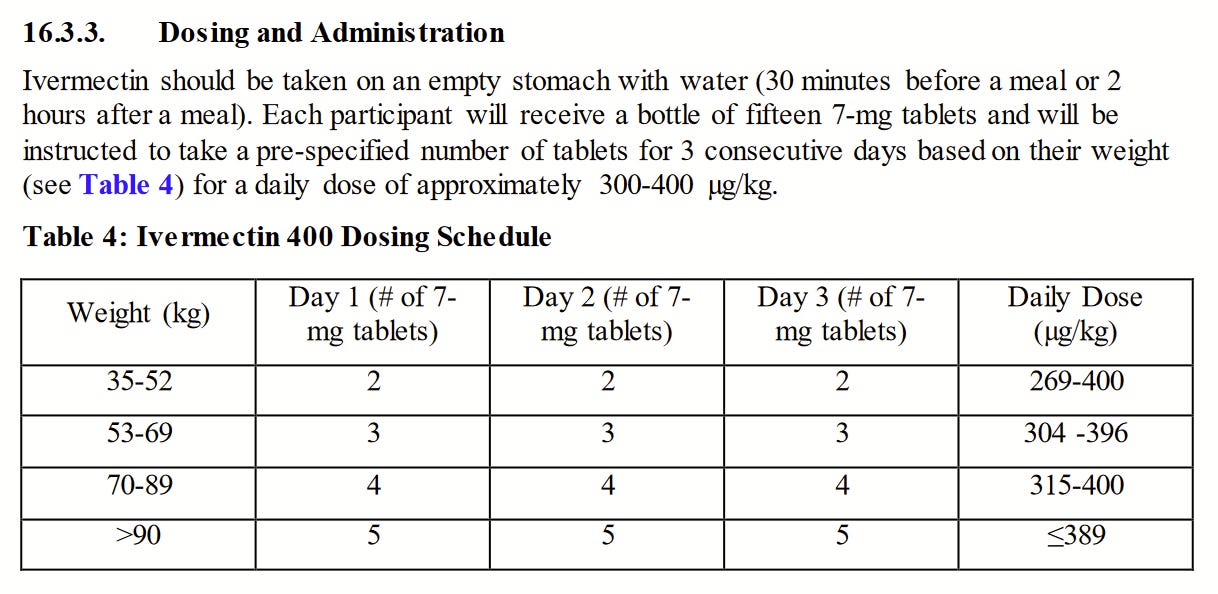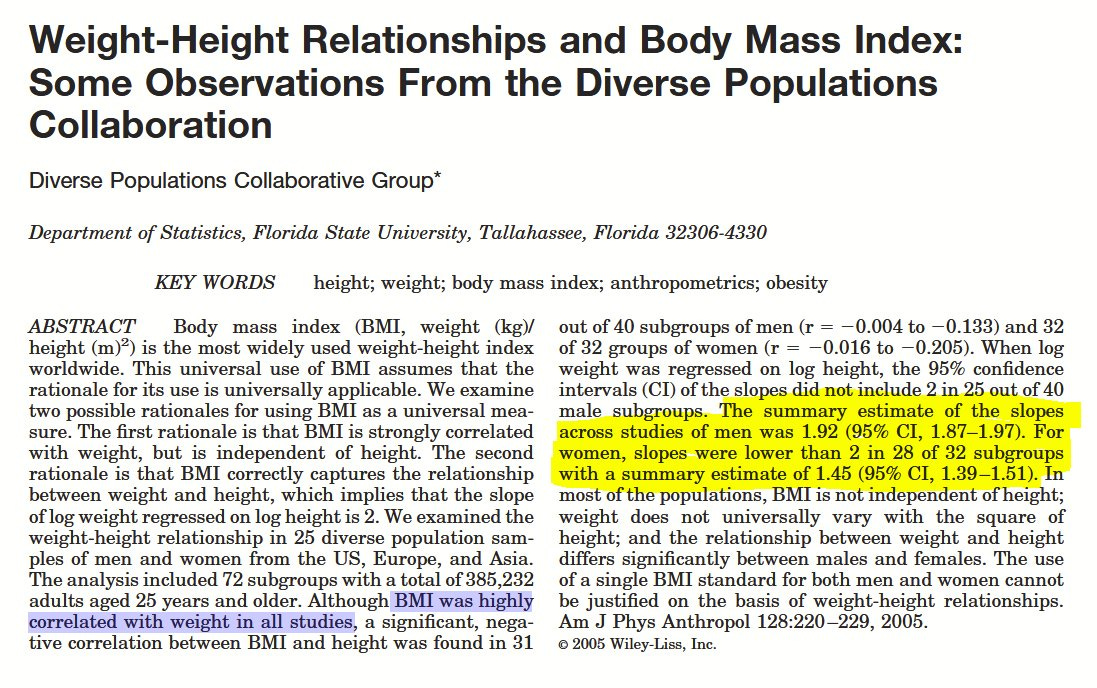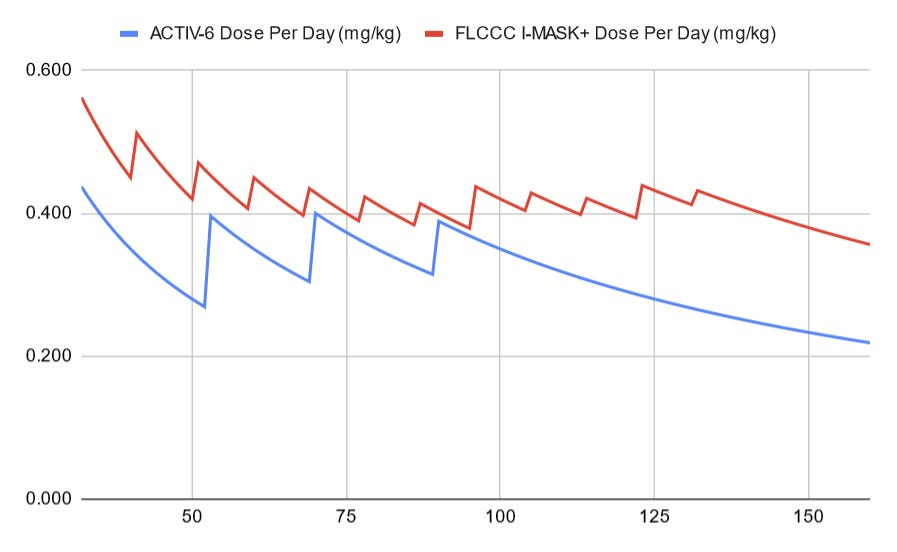Trying to understand what I learned in my conversation with the ACTIV-6 patient, I looked at who is actually responsible for the ACTIV trials. It turns out that ACTIV is a “Public-Private” partnership, with several pharmaceutical companies having representatives on its executive committee:
Beyond J&J, Roche, and Takeda, there is also representation from Pfizer, which—in Paxlovid—has a direct competitor to all the repurposed drugs being tested by ACTIV-6. And let’s not forget that Anthony Fauci, also on the executive committee, has made statements of this nature:
Is this someone we’d trust to lead an organization that will answer the question of ivermectin’s Covid-19 efficacy for us?
If you’re wondering whether the trial was sabotaged by lack of funding, you can rest assured that was not the case. The trial was provided with an initial $155 million, working out to more than $11,000 per patient:
So, whatever the reason was that they could not serve patients over the weekend—in our trial participant’s experience—lack of money was not it.
Most nurses and doctors have been taught the “five rights” of medication use: the right patient, the right drug, the right time, the right dose, and the right route. So let’s see how timing and dosing affected this trial:
Was The Timing Right?
Antivirals are like a parachute. If you open them too late, you’re going to get hurt, badly. This doesn’t mean the parachute didn’t work. It means that you didn’t open it in time. Very similarly, if an antiviral is taken too late to effectively check the replication of the virus, any effect will be suboptimal, to say the least.
This is, of course, is very well understood by the people who test antivirals. For instance, the EPIC-HR trial—that led to Paxlovid's approval—as well as the MOVE-OUT trial—that led to Molnupiravir's approval—excluded patients that were over five days from symptom onset. MOVE-OUT had 50% of patients with less than three days from symptom onset. For EPIC-HR that was 68%. ACTIV-6 on the other hand, only had 25% of ivermectin patients with less than five days from symptom onset. As absurd as it may sound, 75% of the patients in ACTIV-6 for ivermectin would have been rejected from the Molnupiravir and Paxlovid trials for having the disease in too advanced a stage.
And let’s not forget that based on what we learned from the ACTIV-6 patient I spoke to, the drug was shipped on the first day of participation in the trial, which means most likely we should add an extra day to all the ACTIV-6 numbers above. Based on the literature review I did in this previous article, the ACTIV-6 trial for ivermectin treated its patient later than all the trials describing themselves as “early treatment” in the New England Journal of Medicine.
Using the same formula I used in that article, the ACTIV-6 ivermectin 400 trial would be described as having a maximum of 15 days from onset of symptoms and a median of 8 days (IQR [6-9]), until the patients were actually treated. Here’s what the trial tells us about results in subgroups:
In short, this trial does not fit any definition of early treatment. Even so, there’s a clear trend towards a timing-response relationship.
Was The Dose Right?
According to the trial publication, the patients got approximately 400 μg/kg of ivermectin for three days.
What does “approximately” mean? Let’s find out! Naturally, for this, we must read the protocol:
This looks like the sort of thing that would look good on a chart:
Well, that is… interesting. You see, the 400μg/kg is actually the maximum dose per kg of bodyweight, which would be given only to patients weighing exactly 35, 53, and 70kg. (That’s 77, 117, and 234 lb respectively, for my friends of the imperial persuasion.) Everyone else gets underdosed to a smaller or greater extent. My best estimate—taking the data the authors gave us—is that the average dose was about 343μg/kg, or 14% less than advertised. This is a naive average, because I assume every weight in the range has the same probability of appearing, but it’s OK for a first estimation.
Even assuming that there is a perfectly reasonable explanation for why the authors chose to dose ivermectin this way, nobody forced them to claim they gave 400μg/kg instead of whatever the average or median was. Scientific integrity demands that they be precise in describing the experiment they ran. The fact that they failed in such an easily verifiable way inspires little trust. For me, accurately describing dosing is the brown M&M test, and ACTIV-6 failed it (as have so many others before it).
But that isn’t all. You see, when we cross beyond 90kg (198.4 lb) the dose/kg decreases as weight increases. And weight is also highly correlated with increase in BMI:
BMI is also a serious risk factor for COVID. Risk of death doubles for patients with the highest BMI:
All this goes to show that the ACTIV-6 trial didn’t just underdose patients in a random fashion. It underdosed its most at-risk patients the most. As such, the risk-adjusted underdosing is substantial in the highest weight/BMI patients.
How Was The Dose Decided?
You may have seen Tweets like these going around, by ACTIV-6 author Dr. David Boulware:

Three assertions here:
Dr. Boulware consulted a prominent member of the Front Line Covid-19 Critical Care Alliance (FLCCC).
This prominent member thought the dosing was “totally reasonable.”
FLCCC changed their dosing recommendation in October 2021.
The internet can be an incredible place sometimes. For instance, we found that very email exchange, in said prominent FLCCC member Dr. Pierre Kory’s Substack:
I’ll leave it up to the reader if this qualifies as “consulted with.”
Note that Dr. Boulware doesn’t even say he’s asking as part of trial design. For all Dr. Kory knows, Dr. Boulware might be asking for a relative and mentioning the RCTs as a reference point.
Also note that Dr. Boulware explicitly asks for early & mild disease. As we have already discussed, the trial doesn’t qualify as early treatment. It also describes itself as a study of “mild & moderate” patients, so that, too, is incorrect.
Dr. Kory’s first sentence in response is:
400mcg for 3 days is totally reasonable.. but I would go 5 if they did not have a sufficient response/resolution by day 3 .
So, first of all, Dr. Kory makes clear that this regimen is shorter than he would personally use. HOWEVER:
My issue with RCT’s is that they treat too late by definition in almost all acute illness models – for every day later you treat, you need to be more aggressive. So 400mcg is fine for me as a doc when a patient calls me or I get word someone is sick.. but by the time a sick patient is enrolled in an RCT who knows
Here he makes it clear that the regimen is fine for him as a doctor when a patient calls—which is usually on day 1 or 2 of symptoms—but not for an RCT which, structurally enroll patients later.
Why does Dr. Kory say that RCTs enroll patients late? Let me count the ways:
RCTs often require positive PCR tests to confirm infection, which themselves take a few days and are subject to pandemic and demand-related bottlenecks.
Other times, trials ask for not one, but two symptoms besides a PCR test (like ACTIV-6 does, actually—the man really is a prophet), which would tend to add to the overall time to initiation.
In general, there is a large amount of paperwork that needs to be done. For one, enrollment may take time. For another, many trials actually initiate treatment a day after the patient has been randomized—since there is so much data gathering that needs to be done—even after the patient has been enrolled.
Finally, due to pandemic precautions, some trials will send the drugs to the patients using a delivery service like FedEx. Some trials won’t ship drugs over the weekend. If you think I’m talking about some random trial in a far away land, reader, I assure you, I’m talking about ACTIV-6 again.
But let’s go back to a little comment that may have gotten lost in the noise:
for every day later you treat, you need to be more aggressive.
This sounds pretty important. I wonder if that part of the consultation with FLCCC was incorporated into the ACTIV-6 protocol somewhere. I haven’t read the whole thing yet, so if an author could kindly point me in the right direction, I would love to be delighted.
Other issue is I believe any further placebo controlled RCT’s are unethical – but understand others don’t see the world that way.. not a surprise - Pierre
Pierre Kory, MD, MPA
This last line may seem out of place, but in fact, it is historical testimony to the same line of ethical thought we’ve seen at a similar point in time from someone like Dr. Thomas Borody. It goes to show that this wasn’t something being said for effect in the media, but a deeply held principle that was conveyed in private to anyone who seemed like he wanted to listen.
The representation of the email is entirely misleading, and I lack the legal background to determine if the Tweet meets the standard of libel. If, however, Dr. Boulware stands by the fact that he “consulted” with the FLCCC, the least Pierre Kory can do is to send him an invoice.
There is another, bigger problem, though.
What Did 400 μg/kg Mean For FLCCC?
The FLCCC—with its v10 protocol, which was current at the time of Boulware’s email—already recommended 0.4mg/kg dosing for treatment after the fifth day of symptoms, or for patients dealing with aggressive variants:
This effectively covers all the patients in the ACTIV-6 trial, who were not only overwhelmingly beyond five days of symptoms, but also were dealing with Delta—a more aggressive variant than Alpha—which was dominant at the time of Boulware’s email to Kory.
In addition, the FLCCC protocol was always very specific about how it implemented that recommendation:
So how does that superimpose on the ACTIV-6 dosing if we compare the 400μg/kg versions? It looks something like this:
The FLCCC doses in a way that makes 400 μg/kg the minimum—not the maximum.
Even if Dr. Boulware was not enamored with the FLCCC, by using what was recommended in their protocol at the time, he would have had a defensible position, if his intention was to say that he followed the recommendation of the FLCCC. All this was knowable at the time, if only Dr. Boulware had visited the FLCCC website and downloaded their protocol.
So how do the two implementations differ? The naive average here across the 40-140kg weight range is 324 μg/kg for ACTIV-6 vs. 421 μg/kg for FLCCC—a 23% average drop for the ACTIV-6 implementation from the FLCCC baseline. If I use the weight IQR information offered in the ACTIV-6 paper—with some generous assumptions—I can bring the relative drop to just under 20%.
As if that wasn't enough, the ACTIV-6 trial explicitly instructed patients to take ivermectin on an empty stomach, whereas FLCCC instructs them to take it with or after a meal. According to Merck's package insert for stromectol, “Administration of 30 mg ivermectin following a high-fat meal resulted in an approximate 2.5-fold increase in bioavailability relative to administration of 30 mg ivermectin in the fasted state.” In other words, FLCCC's weight-adjusted dose is boosted to the equivalent of 843μg/kg, making the ACTIV-6 effective dose 60% lower than the FLCCC effective dose. Let's keep in mind that we're still comparing two protocols that both nominally administer 400μg/kg.
And somehow, it gets worse. Much of the risk of deterioration is within the overweight patients. What's more, the higher the weight, the more severe the underdosing. So just calculating the amount of underdosing doesn't reflect the degree to which the results would have been affected. I've been trying to quantify this compounding of risk, but the precise version of this work will have to wait for another article. I expect the risk-adjusted dosing of ACTIV-6 might look like 70-80% lower than the dose the FLCCC recommended.
Let’s go back to the original tweet:

We can now see that:
The question Dr. Boulware asked did not match the trial that was executed.
Even if it did, the response is deceptively summarized.
Even if it wasn’t, the dosing implemented is very different from what FLCCC recommended at the time.
Further, the claim that the protocol was updated in October 2021 is false. The first version mentioning an even higher dose was in August 2021.
Did The Patients Even Take The Medicine?
Can it get worse than that? Well, of course it can! Dr. Boulware said the following to me on Twitter:

While the author admits the fear of politicization, the paper does not deign to inform us how many patients actually took the drugs they were given. Is it hard to believe that patients may have had reluctance about taking the "horse dewormer paste" drug? Especially when the FDA is putting out Tweets like this fine specimen of messaging?
The only other major US clinical trial on ivermectin that ran during a similar time period reported that only 85% of the patients took more than 70% of the doses they were offered.
This means that beyond the underdosing and late treatment issues, the trial may also have had an adherence issue. We’re simply not told. If the ACTIV-6 authors had an approach to resolving this issue, it would be good to hear about it—which they can document by telling us how many patients adhered to the trial dosing. In addition, clinical trials tend to offer a “per-protocol” analysis, which focuses the results on the patients that did, in fact, take the drug as instructed. Neither COVID-OUT nor ACTIV-6 have offered such analyses.
Dr. David Boulware is an investigator on both.
To Sum It All Up
By underdosing the most at-risk patients, treating patients late, and not telling us how many patients even took the medication, the authors create substantial room for doubt. This is a trial in which other drugs—like Paxlovid—would almost certainly have failed. Separately, the attempt to offload bad decisions to the FLCCC reeks of dishonesty and is not something that should be acceptable within the scientific community. And that’s before we bring the blatant conflicts of interest that members of the ACTIV executive committee had in relation to early treatment medicines.
















It's profoundly disheartening to see your work, and imagine what the governments/med establishment could've done with their limitless pool of financial resources and talent, had they just had the teensiest bit of will to do so.
I mean that in the most complementary way possible :))
I note that both FDA representatives on the board of the so-called ACTIV public-private partnership (Janet Woodcock; Peter Marks) have taken actions suggestive of being more concerned with the interests of the pharmaceutical industry than the public interest. Woodcock in particular exhibits this behavior on multiple occasions. Example - she took actions to suppress availability of hcq. https://twitter.com/april_harding/status/1500234042028998660
(The link takes you to an excerpt from the book by Peter Navarro).
And, we know from the emails obtained by Judicial Watch, that (Interim FDA Commissioner) Woodcock was exerting pressure (via Marks) on Maryanne Gruber and her team to approve the vaccine boosters. https://twitter.com/april_harding/status/1585059645546442752